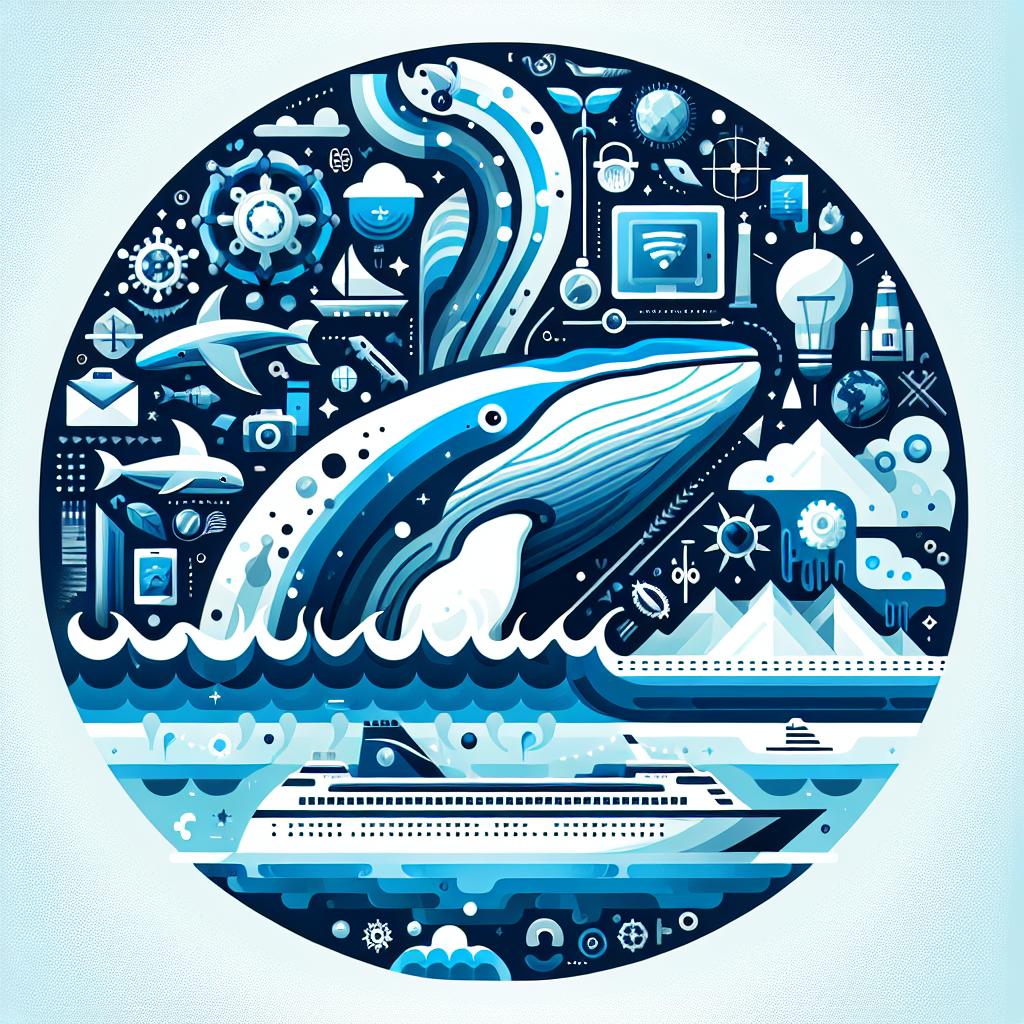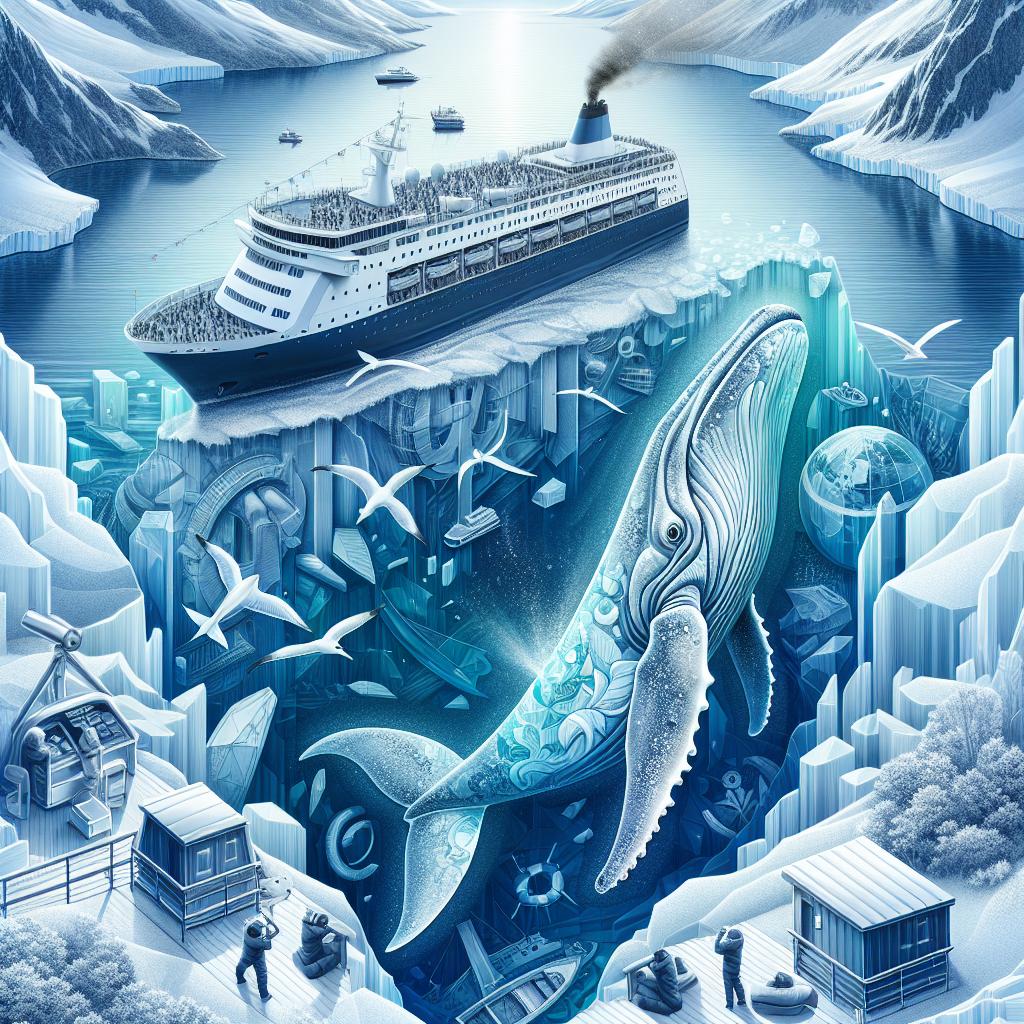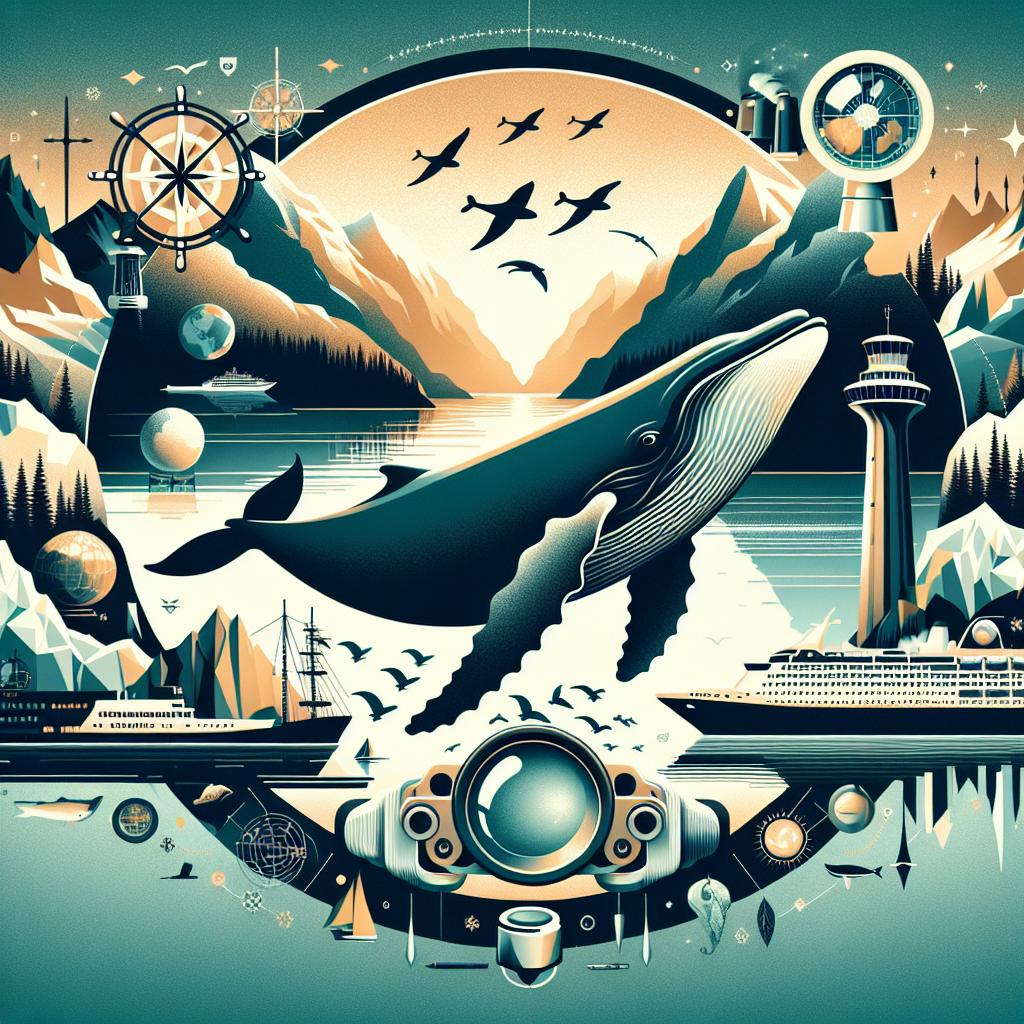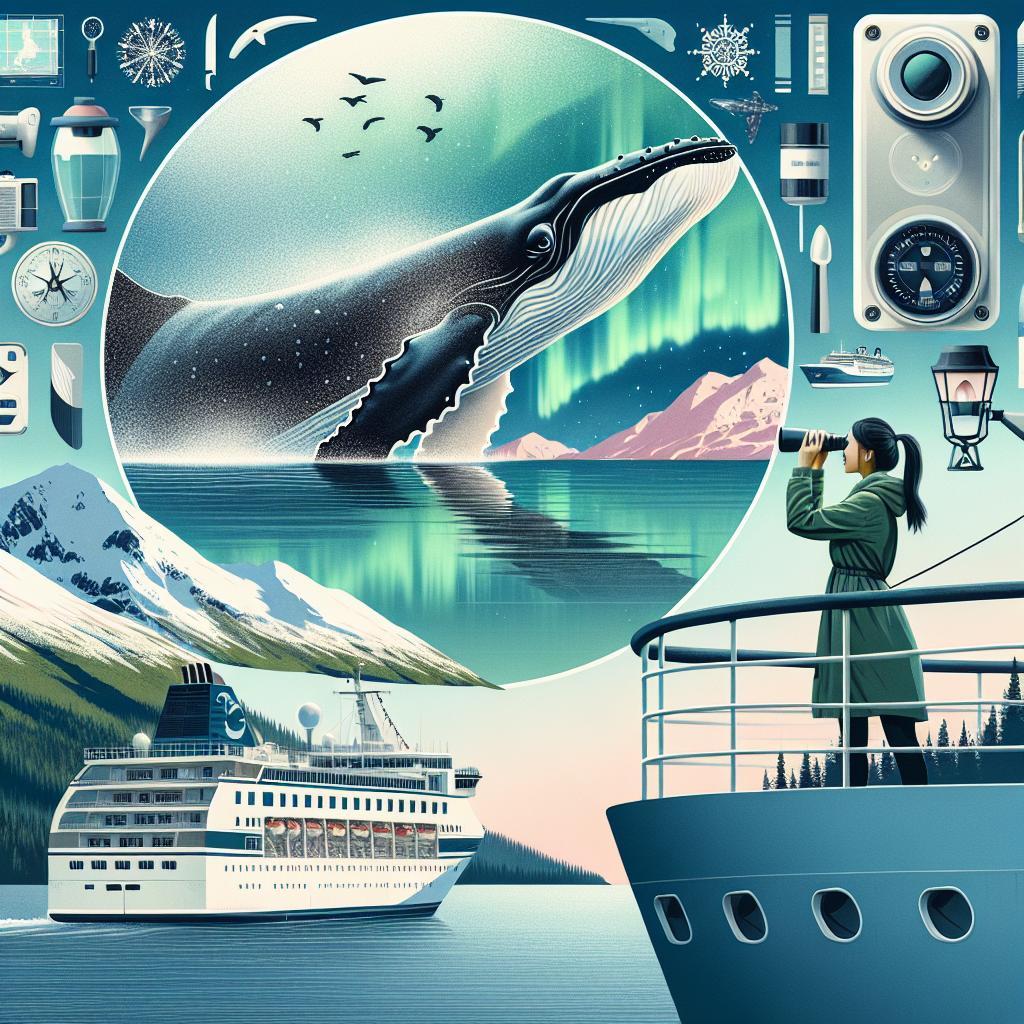Title: How to Spot Whales on an Alaska Cruise: A Journey into the Deep Blue
As you sail through the breathtaking waterways of Alaska, surrounded by towering glaciers and rugged mountains, the thrill of the journey is only amplified by the anticipation of encountering one of nature’s most majestic creatures: the whale. Picture yourself on the deck of a cruise ship, crisp sea air filling your lungs, as you scan the horizon for the tell-tale spout that heralds the presence of these gentle giants. Whether you’re an avid nature lover or a first-time cruiser, the chance to spot these magnificent beings in their natural habitat is an experience like no other. In this guide, we’ll share tips, tricks, and insider secrets to help you become a whale-watching pro, ensuring your Alaskan adventure is filled with awe-inspiring moments. So grab your binoculars, and let’s dive into the magical world of whale watching—your unforgettable Alaskan cruise is about to get even more exciting!
Understanding Whale Behavior for Better Sightings
Understanding the behavior of whales can significantly enhance your chances of sighting these magnificent creatures during your Alaska cruise. Whales are fascinating marine mammals that exhibit distinct patterns of movement and activity throughout the year. For instance, certain species, like the humpback whale, are known to breach spectacularly when they’re feeling playful or during mating rituals. Observing weather conditions is also crucial as whales often surface more frequently in calmer seas or during overcast days. The following list highlights key behaviors to look out for:
- Breach: A dramatic leaping out of the water.
- Spyhop: Head rising vertically above the surface to observe surroundings.
- Tail Slapping: A playful or communicative act that creates a loud splash.
- Fluking: Whale diving with its tail flukes showing, a sign it’s going deep.
The timing of your whale-watching adventure is also essential. Different species migrate through Alaskan waters at specific times of the year, so knowing when to look can make all the difference. Below is a brief overview of whale sightings by season:
| Season | Whale Species | Common Sightings |
|---|---|---|
| Spring | Humpback, Orca | Breaching and pod activity |
| Summer | Minke, Gray | Feeding and surface behavior |
| Fall | Humpback, Beluga | Migration patterns and vocalizations |

Best Viewing Locations on an Alaskan Odyssey
Embarking on an Alaskan odyssey offers a plethora of stunning vistas ideal for whale watching. To ensure you capture the best views of these majestic creatures, consider these prime locations:
- Juneau: Nestled between mountains and the sea, Juneau is a hotspot for humpback whale sightings, especially during their feeding season from April to November.
- Glacier Bay National Park: Home to a rich ecosystem, this park provides opportunities to see orcas, humpbacks, and even the occasional gray whale. The picturesque glaciers enhance the experience!
- Kenai Fjords National Park: With its stunning scenery, this area is not only beautiful but also a crucial whale habitat. Join a kayaking tour for a close encounter with these gentle giants.
- Whale Pass: A lesser-known gem, this location in Prince of Wales Island is perfect for those looking to escape the crowds and observe whales in a tranquil setting.
To maximize your whale-watching experience, the time of day and weather conditions can make all the difference. Here’s a quick guide to the best times to spot whales:
| Time of Day | Best Conditions for Whale Spotting |
|---|---|
| Early Morning | Calm seas and clear skies |
| Late Afternoon | Active feeding behavior |
By choosing these locations and being mindful of the optimal times for viewing, you’ll increase your chances of witnessing the breathtaking spectacle of whales breaching and swimming gracefully in their natural habitat.

Timing Your Cruise for Optimal Whale Encounters
Timing your cruise carefully is essential for maximizing your chances of witnessing these majestic creatures. The prime season for whale watching in Alaska typically spans from mid-April to mid-September. During this period, you’re likely to encounter a variety of species, including humpbacks, orcas, and gray whales. Each month offers unique sightings as they migrate or feed, so consider these key factors:
- Migration Patterns: As spring arrives, humpback whales return to Alaskan waters after their long travels from warmer locations.
- Feeding Seasons: Late summer is particularly fruitful, as whales gather to feast on abundant food sources.
- Time of Day: Early morning and late evening are often the best times to spot whales, as they are more active.
To help plan your cruise, refer to the following table, which outlines typical whale sightings by month:
| Month | Whale Species | Best Viewing Times |
|---|---|---|
| April | Humpbacks | Morning |
| May | Gray & Humpbacks | Late Afternoon |
| June | Humpbacks & Orcas | All Day |
| July | Humpbacks | Morning & Evening |
| August | Orcas & Humpbacks | Early Morning |
| September | Orcas | Noon |

Essential Tips for Capturing the Perfect Whale Photo
When you’re on an Alaskan cruise, timing is everything. Whales are more active during certain times of the day. Early mornings and late afternoons are often the best periods for sightings. Being aware of the tidal patterns can also enhance your chances; many whales follow the food sources that come with the changing tides. Make sure to bring along a pair of binoculars for a closer look, and always keep your camera ready. You never know when a majestic creature might breach the surface! One helpful tip is to look for spouts or tail flukes on the horizon, which are telltale signs that whales are near.
Understanding your equipment can make a significant difference as well. For capturing those breathtaking moments, opt for a camera with a fast shutter speed and zoom capabilities. Whether you’re using a DSLR or a smartphone, consider the following essentials:
- Stabilization: A steady hand or a tripod can keep your shots sharp.
- Continuous Shooting Mode: This allows you to capture a series of images as action unfolds.
- High ISO Setting: Great for low-light conditions, especially during early morning and late evening.
To organize your photos effectively, you might want to create a simple table outlining your best shots, showcasing the whale species, time of day, and location. Here’s an example:
| Whale Species | Time of Day | Location |
|---|---|---|
| Humpback Whale | Morning | Juneau |
| Orca | Afternoon | Seward |
| Gray Whale | Evening | Glacier Bay |
To Wrap It Up
As your Alaska cruise draws to a close, and the stunning vistas of snow-capped mountains and glistening waters slowly fade into memory, remember that your adventure doesn’t end with these majestic creatures. Each wave you saw and each spout you spotted is a gentle reminder of the deep connection we share with the wondrous wildlife of our planet.
As you pack your bags and prepare to return home, carry with you not just the exhilarating stories of breaching humpbacks, the graceful finbacks, and the playful orcas, but also an appreciation for the delicate ecosystems they inhabit. Whether you snapped a perfect photo or simply sat in awe of the vast wilderness, every encounter adds a chapter to your travel tales.
So, keep your eyes on the horizon and your spirit open to the wonders that await. Whether you find yourself again amongst the waves or on dry land, may you always find a way to connect with the beauty of nature. Until next time, happy travels, and may your future adventures be filled with as much joy and discovery as you experienced while whale watching in the breathtaking splendor of Alaska! Safe travels! 🐋✨

